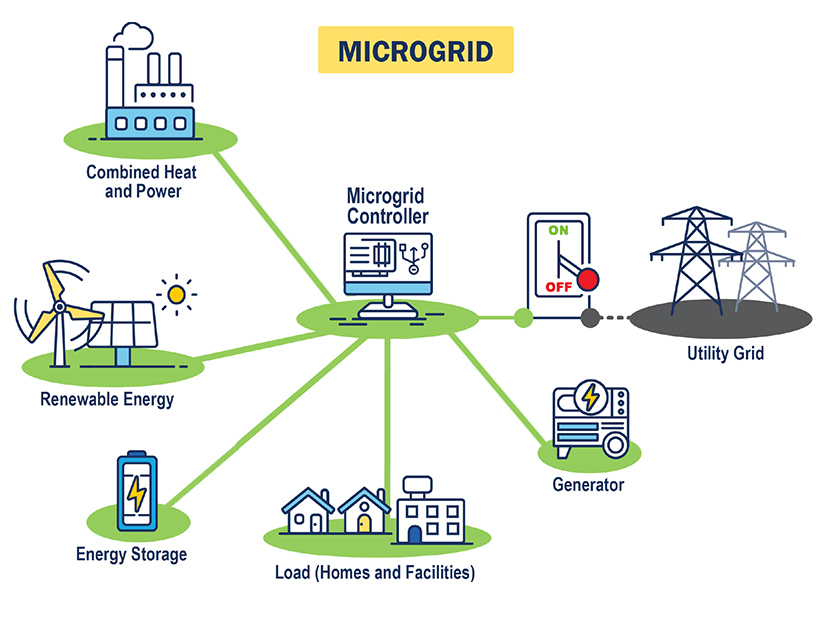Every few years I return to the subject of microgrids — just to beseech everyone to please stop the insanity.
A case in point is the recent hoopla over the completion of the Bronzeville microgrid in Chicago with the usual cheerleading by proud politicians, utility officials, public interest group representatives and media publicists, with nary a Cassandra in sight.
Cutting to the Chase
I have explained theory before, so let me cut to practice. This microgrid cost $30 million in order to provide 6,050 kW of backup generation to the Bronzeville neighborhood in the event of a widespread system outage in Chicago. That is $4,960/kW.
A typical Generac home generator provides 26 kW at an installed cost of $10,500. That is $404/kW.
Yes, you read that right. This microgrid is 12 times more expensive per kilowatt than a bunch of Generac home generators providing equivalent backup service. Yikes.
A Green Justification?
Nope. The microgrid’s generation is 750 kW of solar panels, 500 kW of four-hour batteries and 4,800 kW of natural gas-fired generators.
Cost-benefit Analysis
Power outages average 43 minutes per year in Bronzeville (see page 66), i.e., reliability is 99.99%. A value of lost load analysis showed that the benefit of eliminating these outages (assuming the microgrid would do that) aggregates to about $100,000 per year (again, see page 66).
The microgrid costs $5,300,000 per year (see Page 63). So, the cost of the microgrid is about 50 times the benefit value of the microgrid. Yikes.
Cost per Customer
The microgrid costs a staggering $388 per customer served per month (see page 55), four times the average customer’s monthly electric bill of $93. Of course, the microgrid is paid for with Other People’s Money (other Commonwealth Edison customers), but the key point is that if this microgrid were replicated across the ComEd system, then everyone’s monthly bill would go up about 500%. Yikes.
Critical Service Protection
It’s been highlighted by ComEd and others that the Chicago Police Department’s headquarters is within the microgrid service area — but the police HQ already had backup generation (see Page 66), as of course it should. Yikes.
OK, I’ll stop the microgrid rant.
P.S. An update to my fusion column: The gigantic European ITER project announced that “energy-producing fusion reactions — the goal of the project — won’t come until 2039, and only in short bursts,” and that “fusion cannot arrive in time to solve the problems our planet faces today.”
Here’s a reminder that we could start cooling the planet tomorrow with some sand in the stratosphere. Just sayin’.
P.P.S. On the happy talk front through troubled times, this is the 50th anniversary of the writing of “(What’s So Funny ’Bout) Peace, Love and Understanding” by Nick Lowe, the 45th anniversary of Elvis Costello’s great cover and the 20th anniversary of the superstar cover here. If you made it to the end of this column, thank you, and please turn it up to 11.
Columnist Steve Huntoon, principal of Energy Counsel LLP, and a former president of the Energy Bar Association, has been practicing energy law for more than 30 years.



